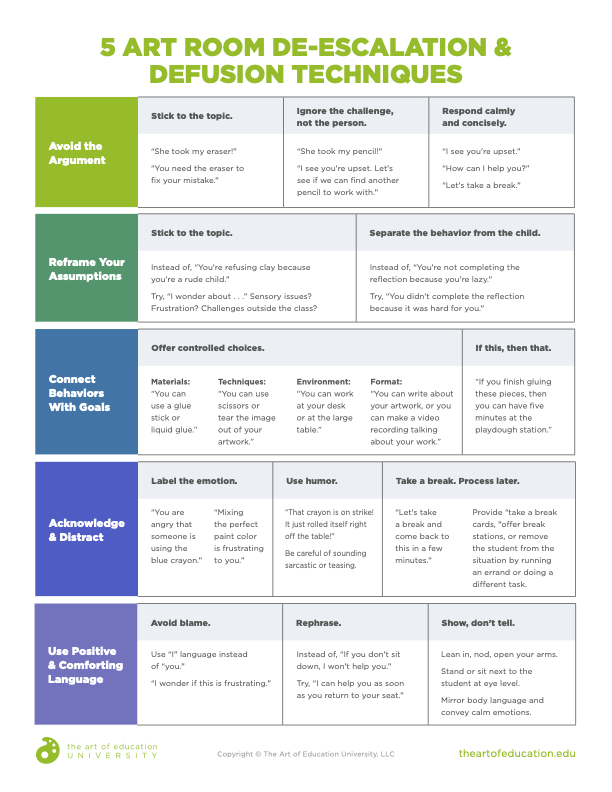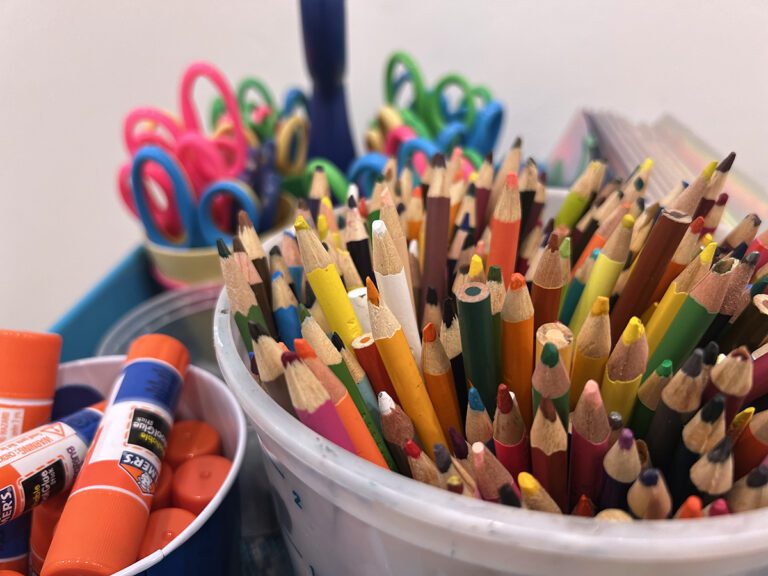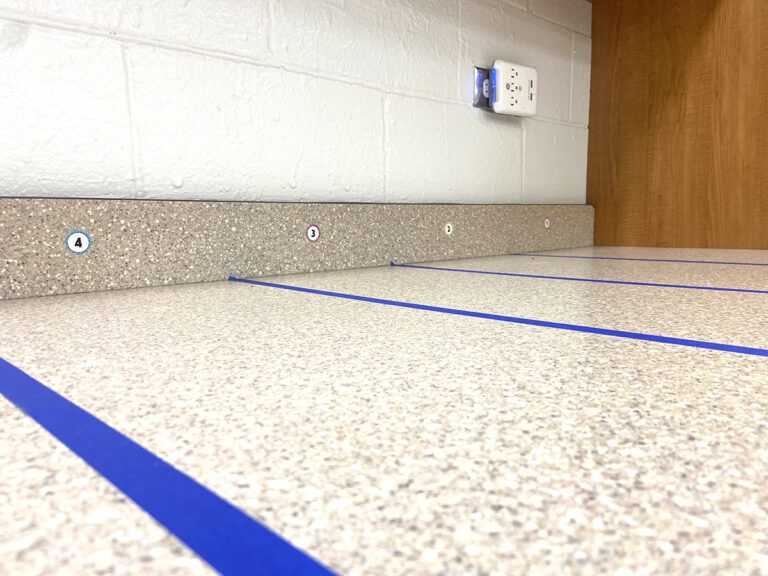We all have students who become angry, frustrated, and overwhelmed. How can we diffuse the situation? Understanding and practicing social and emotional learning is the first step to preventing challenging behavior. Yet sometimes students become dysregulated despite our best-laid structures.
Before we jump into de-escalation strategies with a professional social worker, here are five art room defusion techniques at a glance in this complimentary download.
Download Now!Christine Cusack, Ed.S., is a Licensed Clinical Social Worker at an elementary school in IL. She is also a Certified Clinical Trauma Professional. Cusack provides practical de-escalation strategies to apply in the art room at any level.
There are four main strategies based on Motivational Interviewing and they are:
- Shift the Mindset
- Reflective Listening
- Empathy to Connect
- Questioning to Unpack
As you read through these strategies, consider adjusting your approach. Your students may have varying developmental levels. Christine Cusack is a trained professional in counseling, but you might not be. Access your school’s Student Services resources to best support your students and their needs.
Let’s explore these four main strategies with practical art room application!
1. Shift the Mindset
The first and most important way to de-escalate a situation is to adjust how you think about behavior. When we see challenging behavior, think of it as an unsolved problem. Try not to view it as something negative that needs to go away.
For example, when a student suddenly started throwing crayons, she was not being “mean.” Cusack explains that “… behavior is communication—there is a function to every behavior.” When we recognize that function, then we can meet that student’s needs in a more appropriate way.
Dr. Ross Greene adds in his book The Explosive Child, “Kids with behavioral challenges are not attention-seeking, manipulative, limit-testing, coercive, or unmotivated. But they do lack the skills to behave appropriately. Adults can help by recognizing what causes their difficult behaviors and teaching kids the skills they need.”
Assume that your students are doing the best they can. The art room is full of sensory overload, fine motor Olympics, and sensitive topics. We ask students to think big and create deeply. This is no easy task. Pay close attention to early signs of distress or withdrawal. Your awareness can prevent further escalation.
2. Reflective Listening
Reflective listening starts with active listening. Give the student your full attention. When the student finishes talking, respond by repeating what they said. With a calm presence, confirm with a question like, “Did I understand that correctly?” This gives the student an opportunity to acknowledge or clarify. This small gesture empowers the student to reflect and express their feelings. Cusack explains that “… this is also important so that adults don’t make incorrect assumptions about what a child is experiencing or project their own feelings onto the child.”
Art Room Application
Two students named Marcel and Kennedy get into an argument over shared materials. You walk over to intervene. This is a perfect time for a “perception check”. Approach the argument through a lens of wanting to understand. Try not to carry assumptions.
Marcel shares that Kennedy “stole” the markers, leaving him with none. Mirror your response, “You have no markers to work with.” Marcel says, “Yes! Kennedy stole them! I couldn’t add in the rainbow!” Again, make your response productive and reflective, “You want to use markers to make a rainbow.” Marcel says, “Yes! She took the yellow, red, and orange!”
Through reflective listening, provide time to think and clarify needs and frustrations. Once Marcel has calmed down a bit, you can talk more about feelings and steps to solve the problem. We will unpack both of those parts in the next two strategies!
3. Empathy to Connect
According to Dr. Brene Brown in her book Daring Greatly: How the Courage to Be Vulnerable Transforms the Way We Live, Love, Parent, and Lead, empathy is simply listening, holding space, withholding judgment, emotionally connecting, and communicating that incredibly healing message of you’re not alone.”
Empathy in the art room is important. Learning new techniques, developing skills, and applying them to our vision is difficult! Students don’t always need us to interpret or fix their problems. Plus, we will not always be there to do that for them. Instead, we need to provide space to grapple with these challenges without judgment.
Art Room Application
A student named Matthew is trying to cut out an image to collage onto his artwork. He slams the scissors down and yells, “I hate this! This is so stupid!” Engage in reflective listening, “You hate doing this activity.” Matthew responds, “I mean, I don’t hate this. I just can’t get the scissors to cut the way I want them to.”
Connect words with feelings to extend empathy. Try saying, “it seems like using scissors is frustrating you.” Even better, approach the situation from a place of wonder. Cusack reminds us that “… wondering allows the child to correct us and share their own feelings, or it can acknowledge their feelings if we’re ‘right.’”
Matthew says, “Yes! This makes me so angry! I can’t cut this out and every time I try it looks jagged and terrible!” Acknowledge by saying, “Using scissors to cut precisely is really hard.” Matthew feels validated and heard and the tricky situation is de-escalated.
Sometimes, acknowledging feelings is enough. Other times, provide options for students that will encourage them to keep calm and move forward.
Some options may include:
- “Let’s take a break from this and come back when we are ready to try again.”
- “I have a few ideas on how to make this less frustrating when you are ready.”
- “Let’s work on the background for now and come back to the collage portion in a bit.”
4. Questioning to Unpack
Leading with questions can help you and your student understand what is going on. A student may refuse to do the activity or task at hand. But why? Asking this right away will often cause more stress and shutting down. Students don’t always know why and will need guidance to figure it out. There are several ways to question students to help clarify the issues they are navigating.
Art Room Application
Here are a few ways to question students that will model how to explore and express emotions:
- Open-ended questions to encourage dialogue
“What are some ideas that you have to reattach the broken piece?”
“What do you need to do in order to complete this artwork?” - Problem recognition
“How has throwing the crayons stopped you from completing your artwork?”
“In what ways have the scissors been a problem for you?” - Concern
“What do you think will happen if you take all of the markers from your tablemates?”
“What can you imagine will happen if you crumple your work in frustration?” - Intention to change
“I can see that you’re feeling stuck at the moment. What’s going to have to change?”
“What are you willing to change so that you can safely use the hot glue guns again?” - Probing
“What would be an example of proper darkroom etiquette?”
“What would it look like for you and Kim to work together productively?” - Clarification
“You said your work is ugly. Why do you say that?”
“How does that relate to our discussion?” - Viewpoints and perspectives
“What is another way to look at this situation?”
“What are some of the benefits of working collaboratively?” - Miracle question
“If we had a crystal ball and could see into the future, what would we see?”
“If things worked out exactly how you had hoped, what would be different?” - Scaling question
“If you had to rate this problem on a scale from 1-10, 1 being a lost pencil and 10 being global warming, what rating would you give it?”
“So on a scale from 1-5, a 5 is feeling completely out of control and a 1 is being calm and content, where would you say you are right now?”
A few reminders!
One-on-one and in the moment are the best times to use these de-escalation strategies. Being an empathetic, reflective listener takes a lot of time and energy. While these tactics do take practice, you won’t need to be using them for all thirty students, all the time.
You may very well be an exceptional art teacher, but you are not a trained counselor or trauma specialist. Students can carry trauma that you are not equipped to handle. The art room can be an overwhelming space for students. It is important that you know your resources and support systems. Take time to find out who to go to and when. Support systems include social workers, counselors, deans, health staff, case managers, and other student services staff members.
We can mitigate challenging behaviors by assuming the best about our students. We can also engage with SEL practices. Students experience big feelings in the art room and beyond. De-escalation strategies help students feel acknowledged and validated. We hope you refer to these tactics when you are unsure of the next step. The strategies can guide you in how to diffuse a situation and help everyone move forward productively.
If you are searching for more SEL resources, look no further!
- The Art of SEL Podcast
- Why We Need SEL Right Now (Ep. 193)
- The Art of SEL—2 Reasons Why It’s Not “One More Thing”
- Social-Emotional Learning PRO Pack, found in PRO Learning
What are your “tried and true” de-escalation strategies for the art room?
Who are your resource staff and how can they provide support?
Magazine articles and podcasts are opinions of professional education contributors and do not necessarily represent the position of the Art of Education University (AOEU) or its academic offerings. Contributors use terms in the way they are most often talked about in the scope of their educational experiences.










